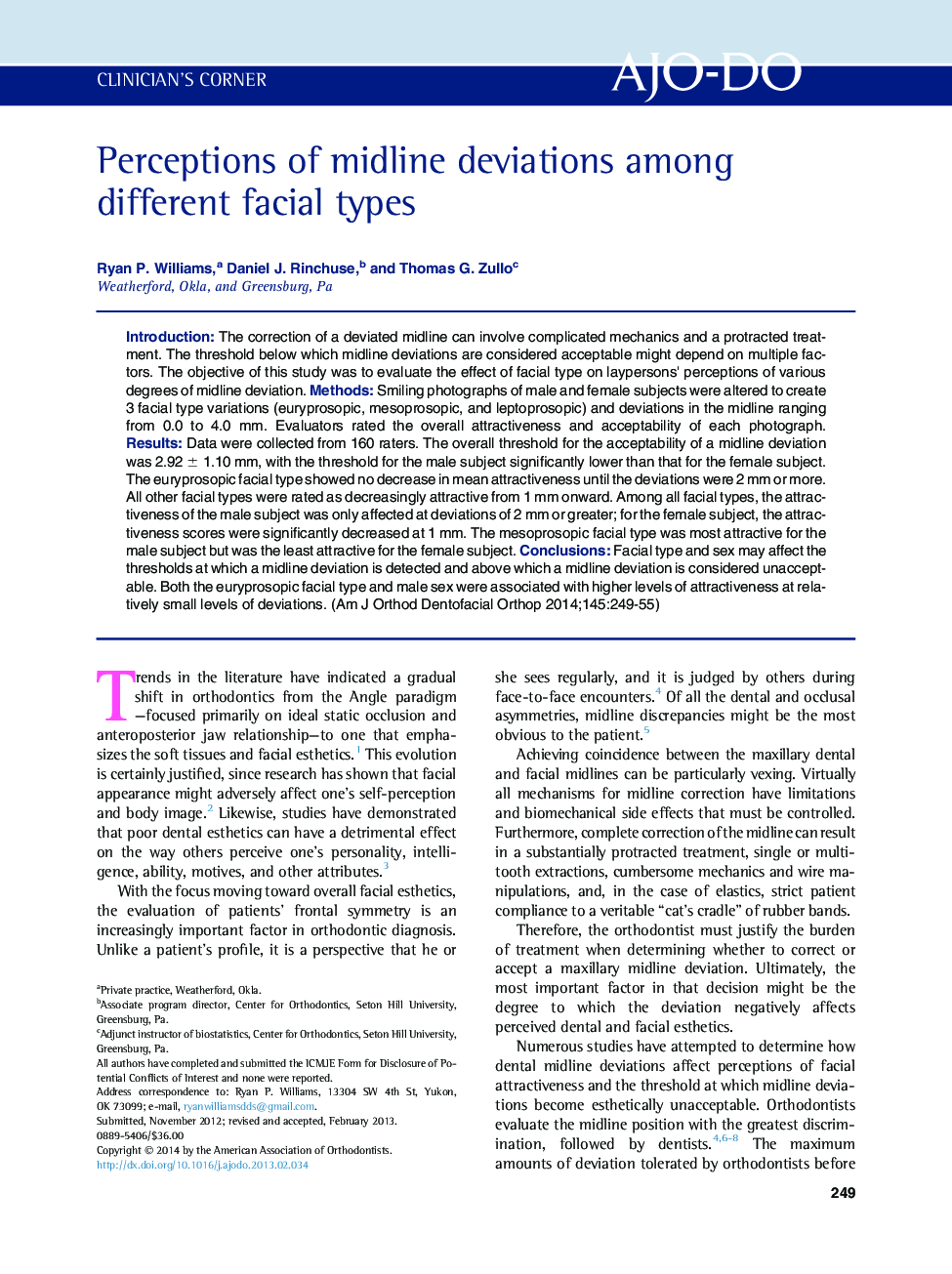| Article ID | Journal | Published Year | Pages | File Type |
|---|---|---|---|---|
| 3116793 | American Journal of Orthodontics and Dentofacial Orthopedics | 2014 | 7 Pages |
IntroductionThe correction of a deviated midline can involve complicated mechanics and a protracted treatment. The threshold below which midline deviations are considered acceptable might depend on multiple factors. The objective of this study was to evaluate the effect of facial type on laypersons' perceptions of various degrees of midline deviation.MethodsSmiling photographs of male and female subjects were altered to create 3 facial type variations (euryprosopic, mesoprosopic, and leptoprosopic) and deviations in the midline ranging from 0.0 to 4.0 mm. Evaluators rated the overall attractiveness and acceptability of each photograph.ResultsData were collected from 160 raters. The overall threshold for the acceptability of a midline deviation was 2.92 ± 1.10 mm, with the threshold for the male subject significantly lower than that for the female subject. The euryprosopic facial type showed no decrease in mean attractiveness until the deviations were 2 mm or more. All other facial types were rated as decreasingly attractive from 1 mm onward. Among all facial types, the attractiveness of the male subject was only affected at deviations of 2 mm or greater; for the female subject, the attractiveness scores were significantly decreased at 1 mm. The mesoprosopic facial type was most attractive for the male subject but was the least attractive for the female subject.ConclusionsFacial type and sex may affect the thresholds at which a midline deviation is detected and above which a midline deviation is considered unacceptable. Both the euryprosopic facial type and male sex were associated with higher levels of attractiveness at relatively small levels of deviations.
